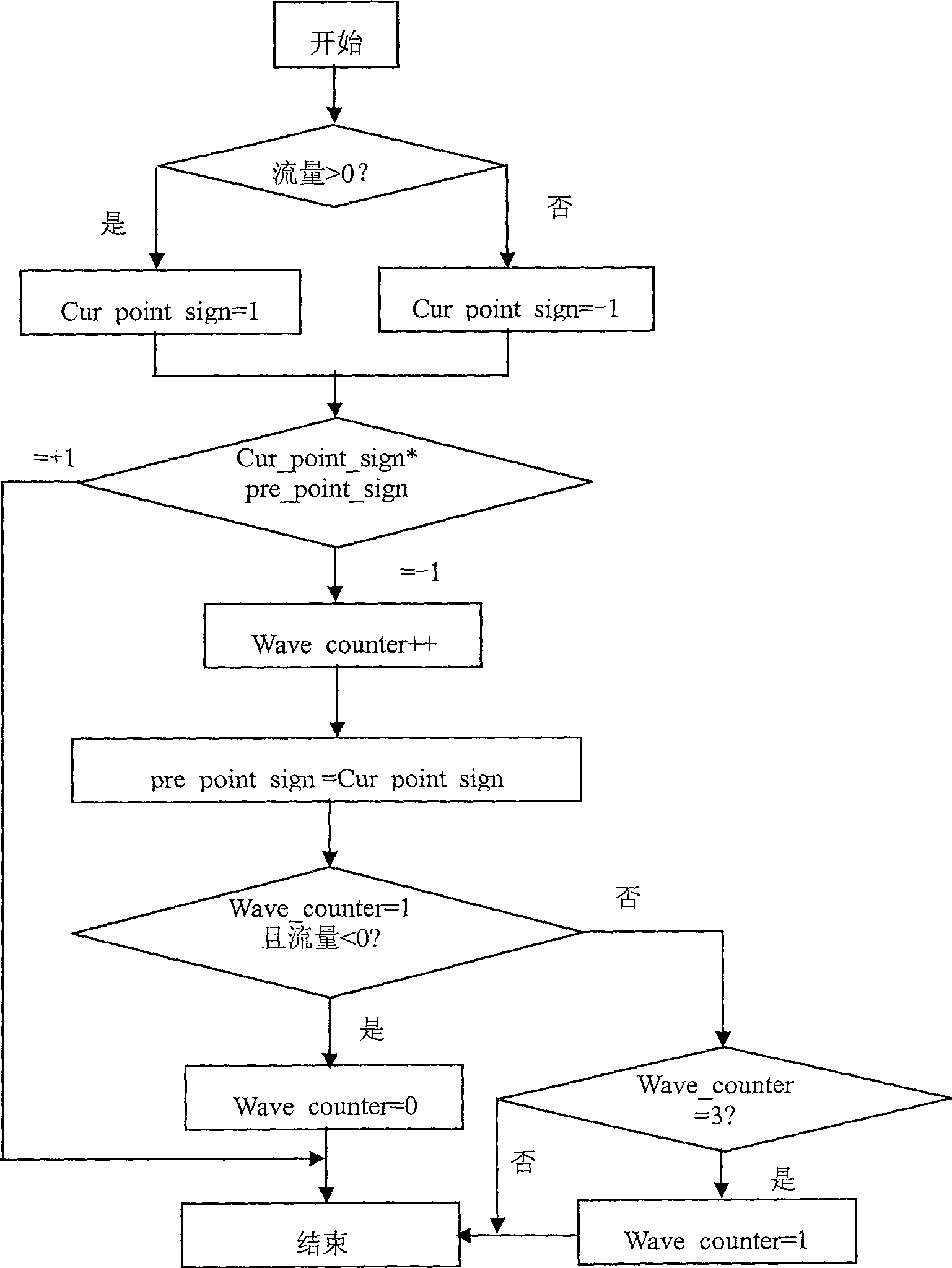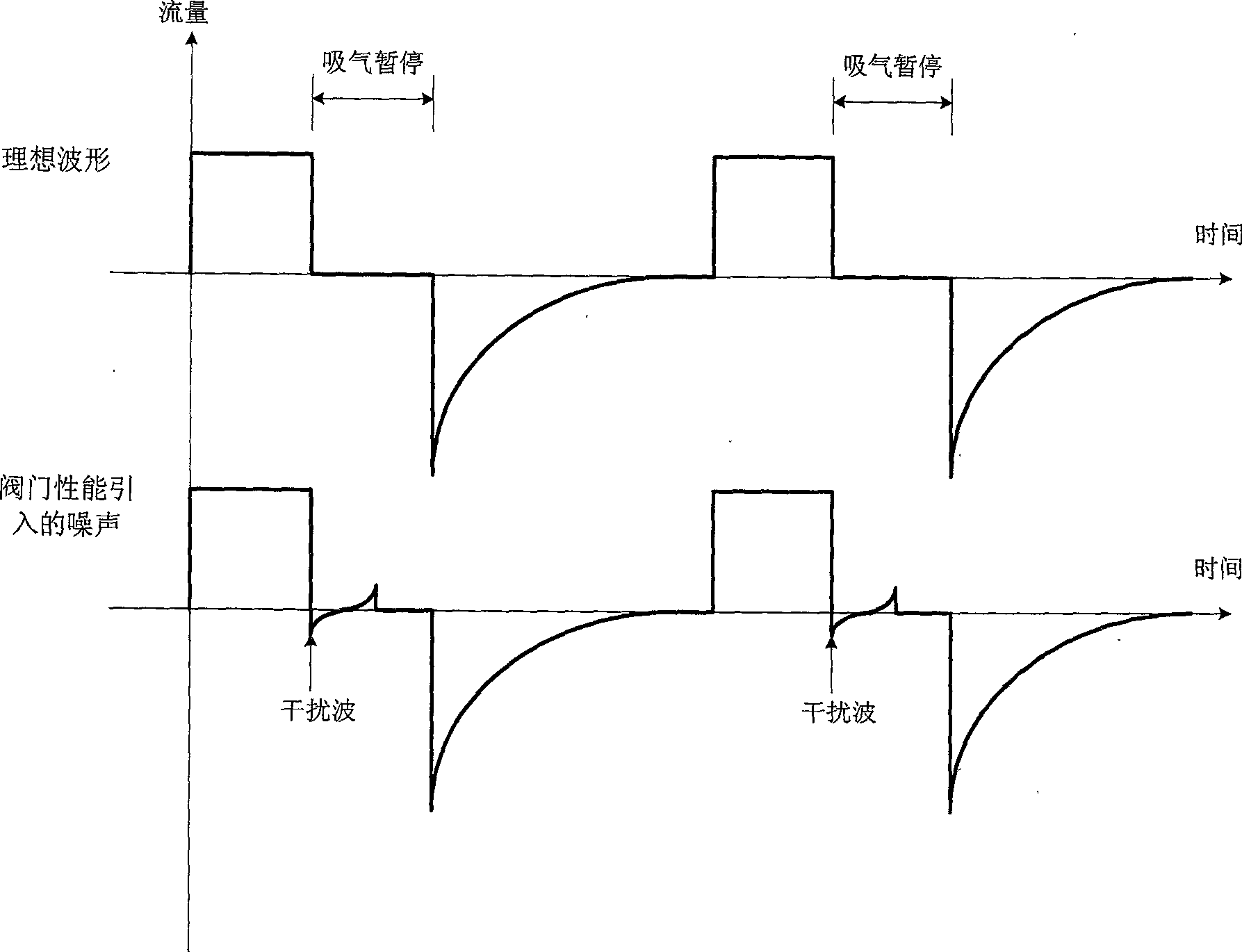Fault-tolerant method and device in respiratory mechanics monitoring system
A monitoring system and mechanical technology, applied in the field of medical respiratory mechanics monitoring system, can solve problems such as unsatisfactory fault tolerance mechanism, sudden change of monitoring parameters, and wrong waveform recognition, so as to eliminate adverse effects, eliminate wrong feedback or wrong diagnosis, and ensure correctness sexual effect
- Summary
- Abstract
- Description
- Claims
- Application Information
AI Technical Summary
Problems solved by technology
Method used
Image
Examples
specific Embodiment 1
[0058] Specific embodiment one, such as Figure 4 As shown, the main components of the respiratory mechanics monitoring system include the sensor device part, the analog amplifier circuit part, the AD acquisition part, the waveform data analysis and data processing part, and the waveform and parameter display part. machine, the processed parameters are usually also used for feedback on ventilation control. The wave recognition method and device of the present invention all take place in the wave data analysis and data processing parts.
[0059] In this embodiment, the parameters output by the respiratory mechanics detection system are subjected to fault-tolerant processing by adopting an abnormal parameter elimination method, so as to ensure the correctness of the respiratory cycle parameters.
[0060] Its specific flow chart is as Figure 5 shown.
[0061] In order to avoid erroneous feedback to the control mechanism due to large fluctuations in the derived parameters, aft...
specific Embodiment 2
[0063] Specific embodiment two, on the basis of specific embodiment one, in order to further eliminate the high-frequency respiratory signal component (waveform whose fluctuation cycle is less than the bottom limit of the respiratory cycle measurement range) introduced by the lax valve closure, according to the state of the respiratory waveform ( When wave_counter) calculates or collects the derived parameters of the respiratory cycle, the determination of the inspiratory time, the expiratory time and the IE ratio (ie, the respiratory time ratio) is added. For example, for waveforms with inspiratory time less than 160ms, expiratory time less than 200ms, and respiratory cycles with IE ratios other than 4:1 to 1:10, they are all considered as interference signals without refreshing and sending derived parameters , because this method is related to the time of inhalation and exhalation, it can be called the time limit method.
[0064] Its processing flow is as Figure 6 shown, i...
specific Embodiment 3
[0075] Specific embodiment 3. This embodiment is a solution to continue to improve on the basis of specific embodiments 1 and 2. The respiratory waveform recognition method adopts a zero-point leap-forward recognition method, and only increases the setting of positive and negative thresholds, such as Figure 7 As shown, the monitored flow value is also compared with positive and negative thresholds, instead of comparing with "0" as in the prior art. The respiratory waveform recognition process of this embodiment is as follows: Figure 8 shown, including the following steps:
[0076] In step 30, detect the flow value of the respiratory airflow, and then perform step 31;
[0077] In step 31, when the flow value is greater than the positive threshold, set cur_point_sign=1, when the flow value is less than the negative threshold, set cur_point_sign=-1, when the flow value is between the positive and negative thresholds, keep the current flow sampling point identification unchang...
PUM
 Login to View More
Login to View More Abstract
Description
Claims
Application Information
 Login to View More
Login to View More - Generate Ideas
- Intellectual Property
- Life Sciences
- Materials
- Tech Scout
- Unparalleled Data Quality
- Higher Quality Content
- 60% Fewer Hallucinations
Browse by: Latest US Patents, China's latest patents, Technical Efficacy Thesaurus, Application Domain, Technology Topic, Popular Technical Reports.
© 2025 PatSnap. All rights reserved.Legal|Privacy policy|Modern Slavery Act Transparency Statement|Sitemap|About US| Contact US: help@patsnap.com



